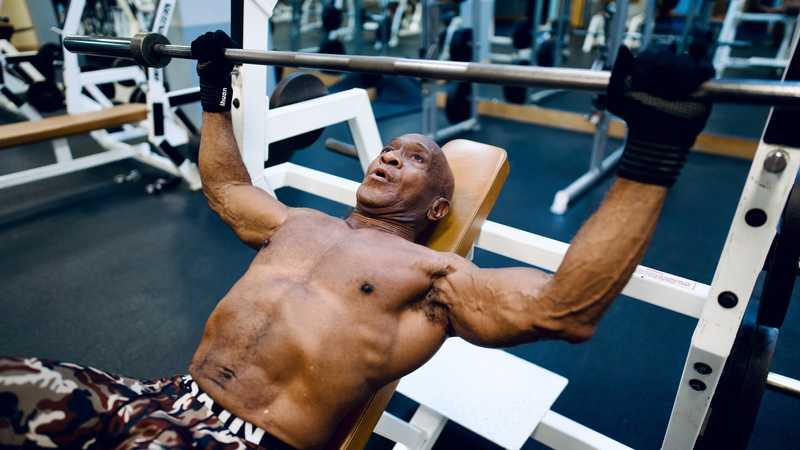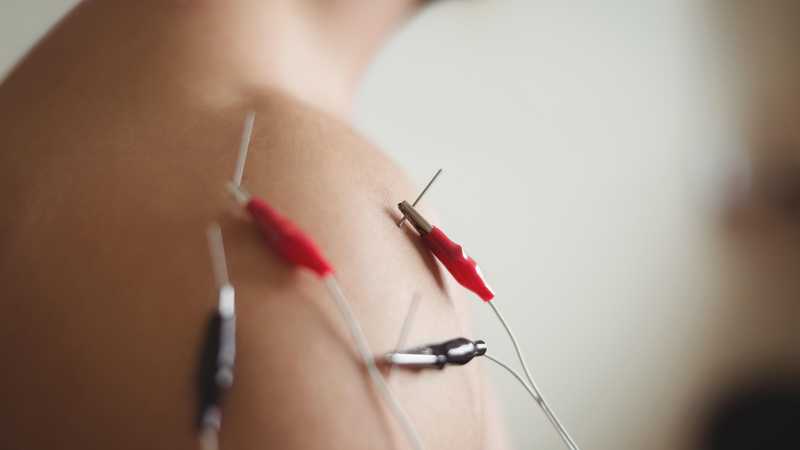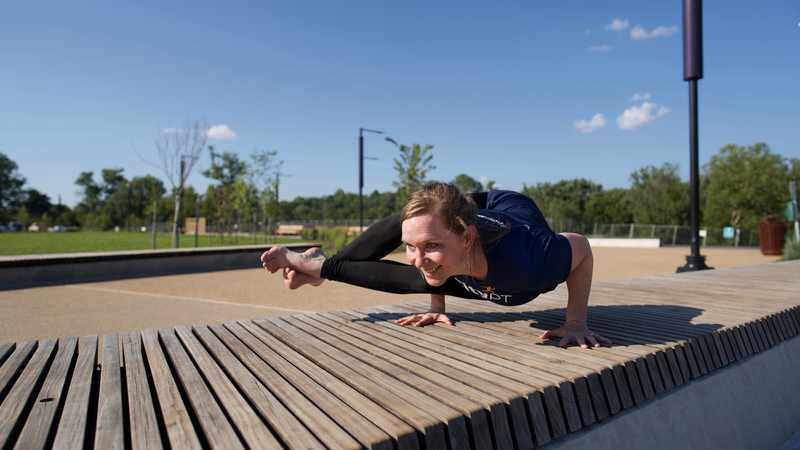Lifting weights with a bench press is an effective way to build upper-body strength. Unfortunately, injuries can happen.
Research shows that 36% of weightlifting injuries are at the shoulder complex.1 So, what if you are experiencing pain in your shoulder when you bench press?
There are a few reasons why this could happen. This guide will cover many reasons you're feeling pain in your shoulder when you bench press.
Quick Answer: Why Am I Feeling Shoulder Pain When I Bench Press?
Shoulder pain when you bench press might be due to improper form, lifting too much, or a pre-existing injury.
Key Takeaways
- First, determine what part of the process you feel pain during and what part of your shoulder hurts.
- Then, ensure you have proper technical form and only lift what you can safely handle with control.
- Rotator cuff disorders, labrum irritations, and AC joint dysfunction are common health conditions that can cause shoulder pain during bench press.
Table of Contents
- Identifying the Issue
- Front Shoulder Pain Reasons
- Shoulder Blade Pain Reasons
- How To Address the Shoulder Pain Issue
- Conditions That May Be Causing the Pain
- Bench Pressing and Rotator Cuff Pressure
Identifying the Issue
There are many things to consider when you feel shoulder pain during or after lifting: muscle imbalances, poor form, overuse, and injury can all contribute to shoulder pain.
The first step is to notice when you feel pain. So, let's look at the typical bench press movements to see when the pain becomes intolerable or maximal so you can better pinpoint the cause.
When You Lower the Bar to Your Chest
If you notice that you are feeling some pain when you bring the bar to your chest, then try changing the angle.
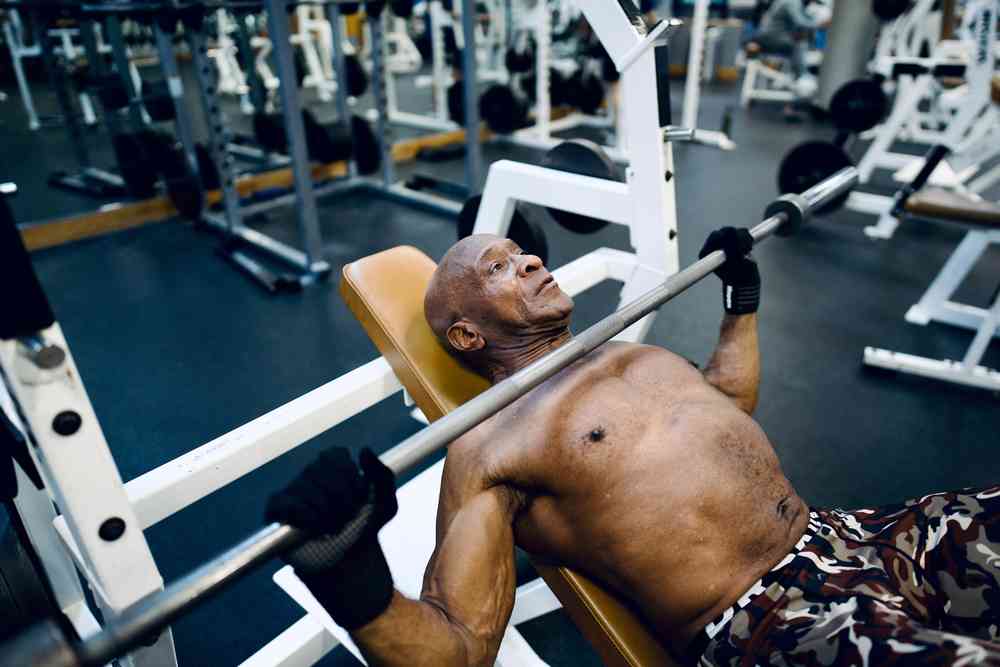
You can move it to a low-incline bench press with adjustable benches. With this angle, you can take some pressure off the shoulder joint.
When You Press the Bar Up
If you feel pain lifting the bar, try changing your grip width. You can widen or narrow your grip to see which feels more comfortable.
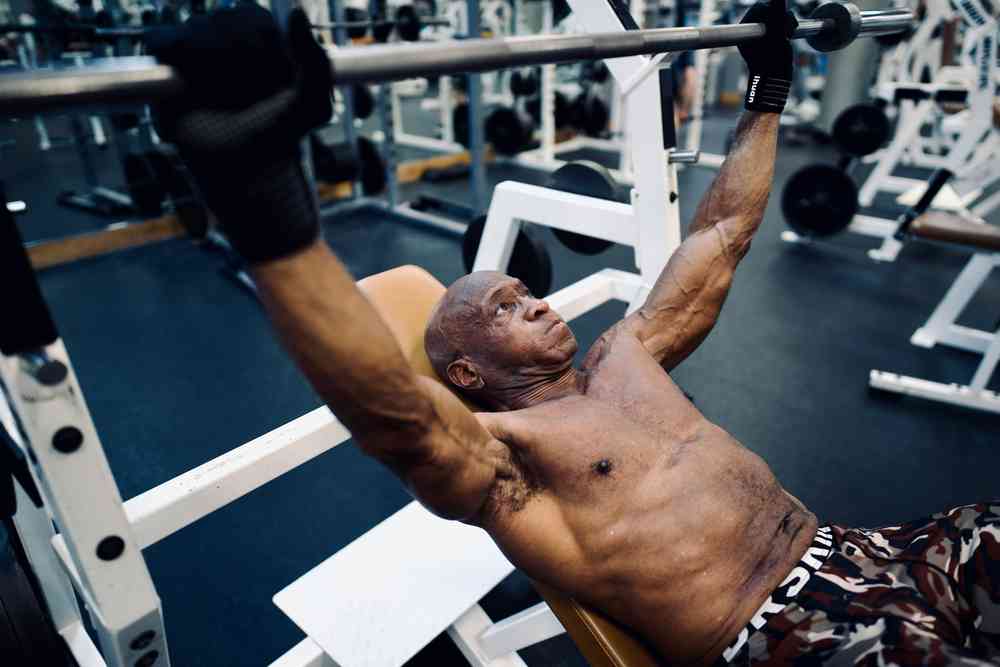
However, studies show that wide and medium grip widths allow up to 12% more load to be lifted than narrow grips. A slight adjustment could make all the difference in your shoulder pain.2
When Your Arms Are Extended
If you are having shoulder pain from bench pressing when your arms are extended, then you may have your elbows flared out too much.
Instead, your elbows should be at about a 45-degree angle.
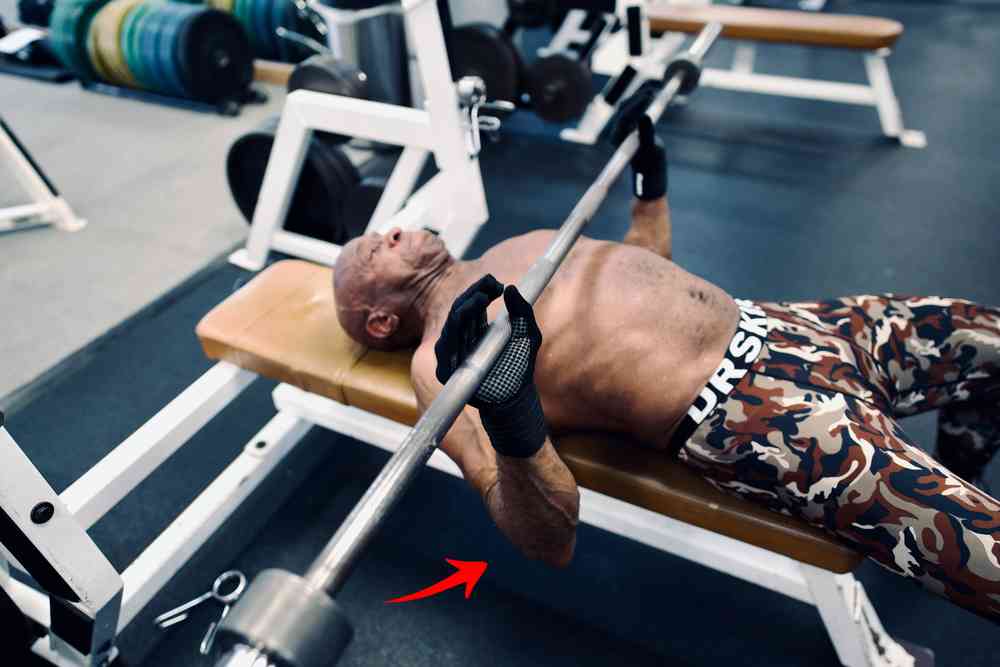
If you have someone who can lift the bar off the rack for you so that you don't have to risk losing form to take the bar down, you will reduce the chances of putting too much on your shoulders when your arms are extended.
Front Shoulder Pain Reasons
Once you determine when you feel the pain, you need to notice where the pain is worse. If you are having front shoulder pain, you should ensure that your arms don't round forward, as this will add pressure to your rotator cuff.
You also want to make sure you pinch your shoulder blades together firmly and maintain this tightness as you perform your rep.
Shoulder Blade Pain Reasons
If you are having pain in your shoulder blade, it could be caused by lifting too much weight or a muscular imbalance. Muscular imbalance can be due to poor posture or improper training. The best possible solution is first to decrease weight.
Now, if that helps with the pain, you need to work slowly to add more weight. If you notice that you are still having pain, then try a good pre-workout warm-up, find and address muscle imbalances, and add stretching to improve flexibility.
How To Address the Shoulder Pain Issue
There are several reasons that you can have shoulder pain during bench press.
Mechanics of the Press
If you're having shoulder pain after bench pressing, consider reviewing the basic mechanics of a safe bench press. The first thing you want to do is make sure that you are set up with a solid foundation to ensure that you reduce the risk of injuries.

A basic step-by-step bench press should look like this:
- Begin with your back flat on the bench and your feet flat on the floor.
- You'll want to hold the bar tightly, wider than shoulder width.
- Have your eyes directly under the bar.
- Pinch your shoulder blades together and arch your back.
- You want to ensure your feet are comfortable and stable on the ground behind your knees.
- Now press your hips onto the bench and lift the barbell up off the rack.
- Bring the bar slowly down to your chest as you inhale and push the bar back up as you exhale.
The Weight Being Used
You can reduce the risk of shoulder pain developing by switching the weights you're using. So, for example, if you use dumbbells instead of a bar, you can control your movement better and reduce injury.
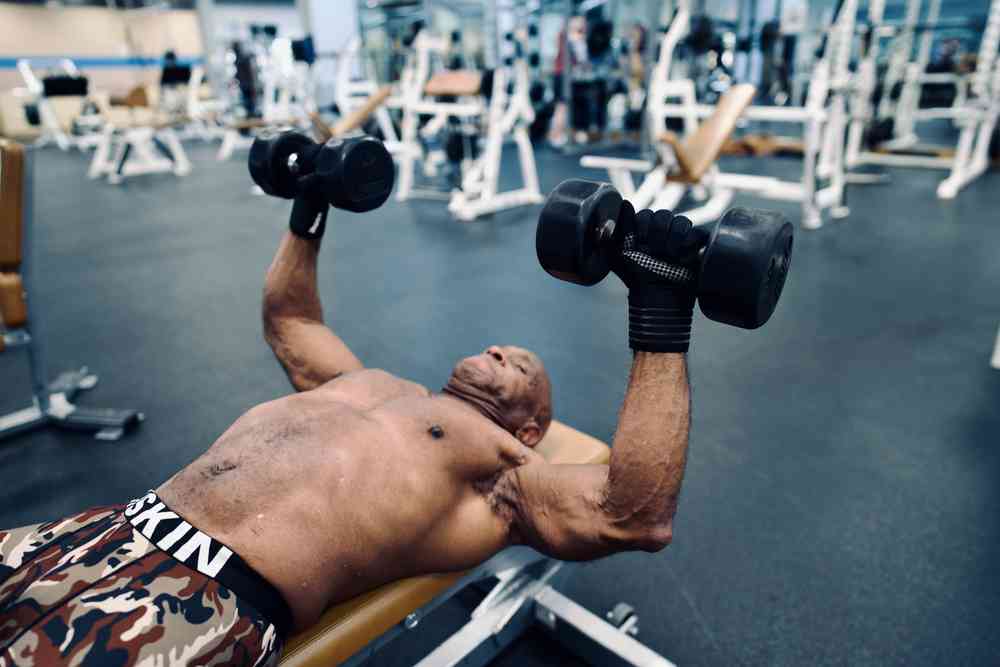
Plus, with dumbbells, you can control weights specifically for each side. So, if you have an injury, you can reduce the amount of weight for that arm.
Also, you want to increase the amount of weight slowly. Trying to lift too much weight before you are ready will increase your risk of shoulder impingement and rotator cuff tears. Try not to worry about lifting more weight to look cool, and don't disregard the proper form to lift more, either.
Bench Press Form
One of the most important things to remember when bench pressing is to ensure proper form. Proper bench press form reduces the likelihood of injuries like rotator cuff tears.
A study on weightlifters determined that 31% of their injuries resulted from technical errors.1
To ensure proper form, you should:
- Maintain a stable foundation by planting your feet firmly on the ground.
- Keep your shoulder blades pinched together, and make sure to arch your back for more stability.
- With a slight bend at your elbows, your arms should be in front of you to ensure external rotation; don't let them flare out. Keeping your elbows closer to your body is a good idea to reinforce this.
- You'll also want to hold the bar wider rather than closer together.
- Try to always bring the bar back down to your chest.
Conditions That May Be Causing the Pain
There are some common conditions that may be causing the pain in your shoulder after bench press. Let's look at them in detail.
AC Joint Dysfunction
Your acromioclavicular joint or AC joint connects your collarbone to your shoulder blade at the top of your shoulder. An injury to this joint is sometimes called a shoulder separation or AC separation.
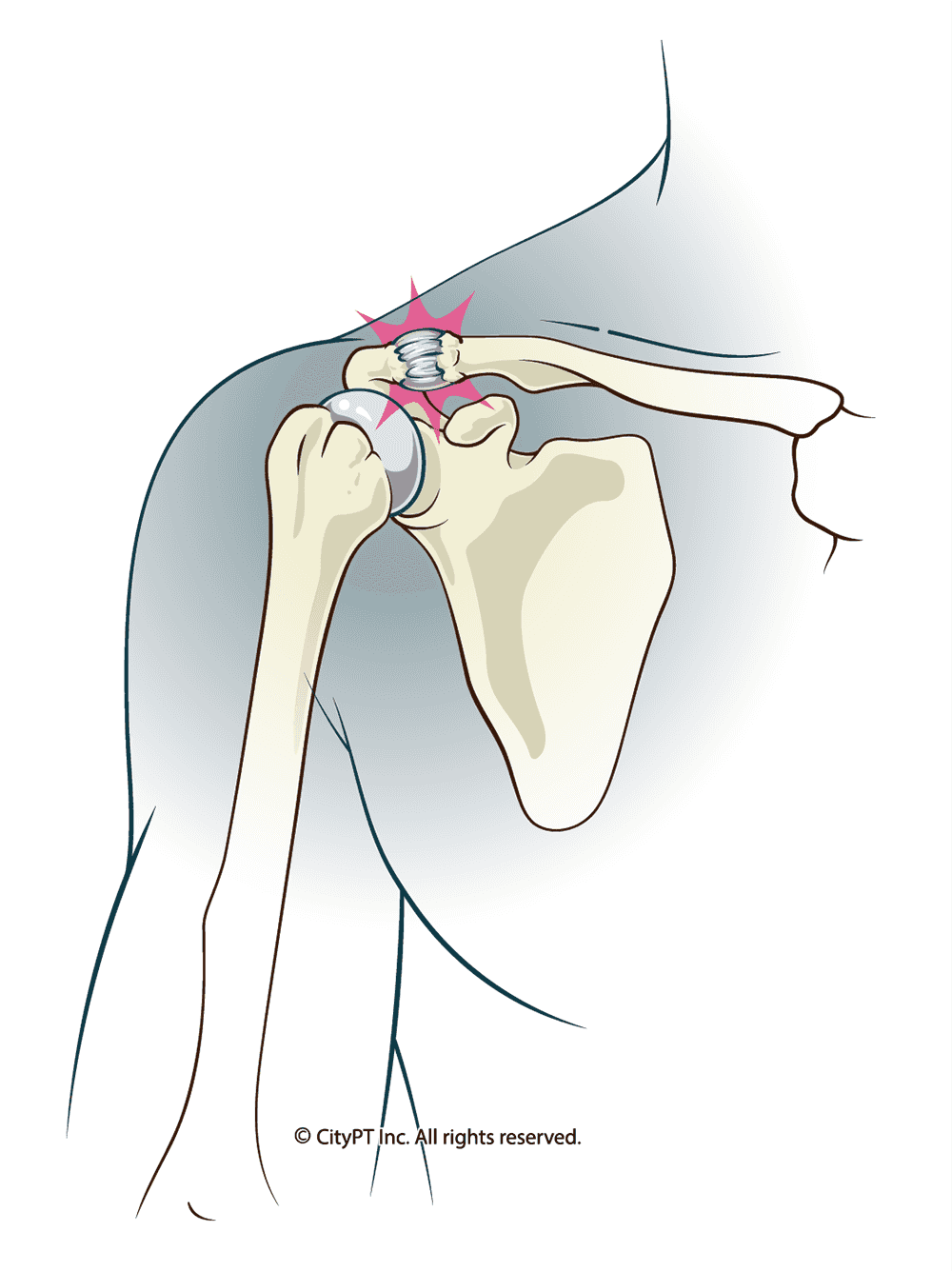
AC joint injuries — typically either sprains, tears, or separations — are very common in the athletic community, accounting for 40-50% of shoulder injuries in contact sports.3 Therefore, these types of injuries usually occur after a fall or a hard hit to the shoulder.
There are varying degrees of AC injury ranging from grades I to VI, depending on severity, with grade I being mild and grade III to VI being different types of full separations.
Symptoms may vary from person to person but may include:
- Swelling or bruising of the shoulder
- Pain in the shoulder (AC joint)
- Decreased range of shoulder movement
- A move in the position of the collarbone
- A bulge or bump at the shoulder separation site
Labrum Irritation
A labrum irritation is a common issue that can cause shoulder pain from bench pressing. Your labrum is the cartilage between the ball and the socket of the shoulder joint. It helps to keep your shoulder socket in place and stable.
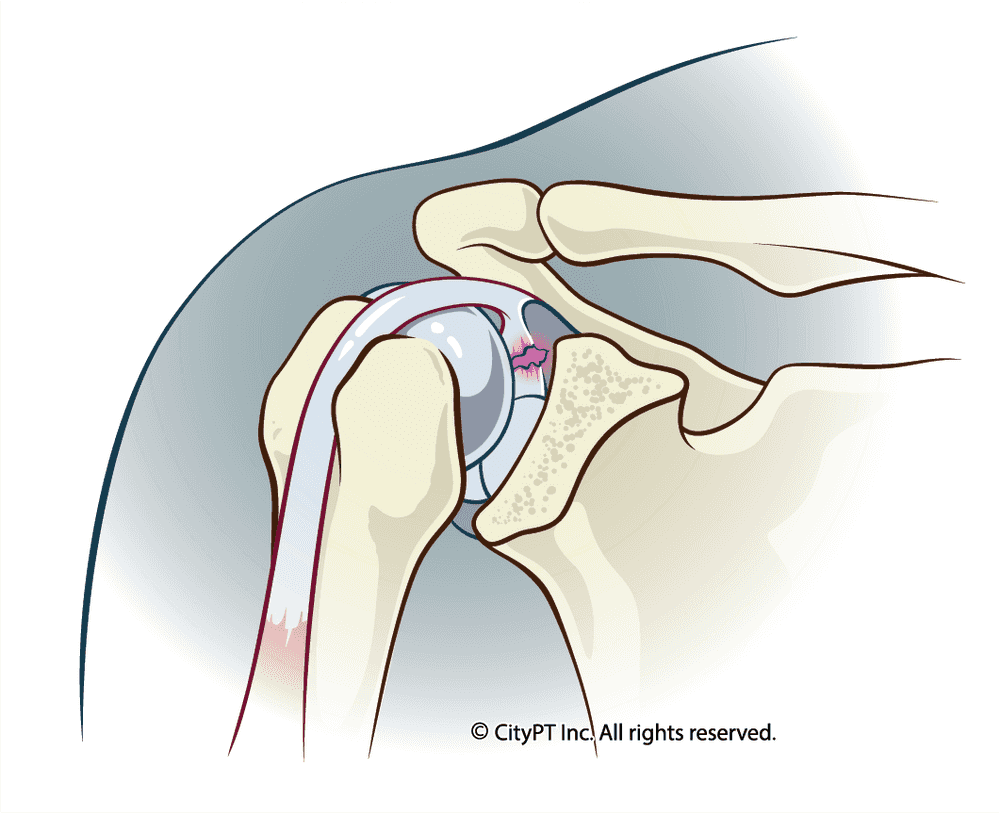
If you are using too much weight or have a poor form, this area can become inflamed and cause pain.
You may have an inflamed labrum or tear if you hear a clicking sound when you raise your arms. A tear is more severe; here are some symptoms to determine if it's a tear.
These include the following:
- A clicking and popping sound
- A reduced range of motion
- Pain in the front and back of your shoulder
- Shoulder instability
- Pain in the top part of your shoulder
- Pain during other overhead motion activities
Rotator Cuff Dysfunction
Rotator cuff disorders are one of the most common reasons for shoulder pain. The rotator cuff is made up of muscles and tendons that stabilize the shoulder, hold your arm in place, and assist with your range of motion. Three types of issues can affect the rotator cuff.
These include:
- RC Tendinitis
- External impingement or bursitis
- Shoulder impingement
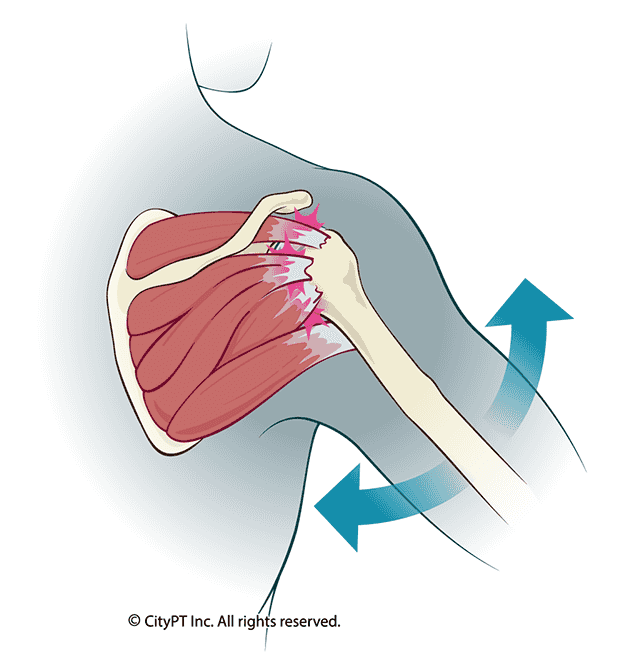
Rotator cuff injuries are common in athletes and people who do repetitive weightlifting. Symptoms can include the following:
- Pain when you lower and raise your arm
- Clicking sounds when you move your arm
- Pain that worsens at night
- Shoulder weakness
Bench Pressing and Rotator Cuff Pressure
It's important to remember that our shoulder blades need to be pressed together and touching the bench. It's essential to make sure that you mindfully keep your blades squeezed tight like this and arch your back a bit to prevent any unnecessary pressure on your rotator cuff.
What To Be Cautious Of
- Be mindful of your feet, and make sure that your feet stay flat on the floor.
- Find your perfect grip width and remain consistent.
- Always keep your glutes on the bench.
- Don't bounce the bar off your chest when you come down with it.
- Don't increase the reps or weights if you have shoulder pain.
How To Prevent Injury
Try adding exercises that strengthen the muscles around your shoulder joint, back, and chest. However, ensure you have a proper form before you start. This step is crucial in preventing injury when lifting weights with the bench press.
Performance PT
The smartest way to prevent injury with bench press is to work directly with a City Physical Therapist who specializes in performance PT. Performance PT is preventive and proactive in nature. An expert physical therapist can analyze your form and movement patterns to ensure you're getting the most out of your exercise while doing it in the safest way possible.
Before you go, please read our disclaimer. This blog is intended for informational purposes only. We are not providing legal or medical advice and this blog does not create a provider-patient relationship. Do not rely on our blog (or any blog) for medical information. Always seek the help of a qualified medical professional who has assessed you and understands your condition.
References
Footnotes
-
Golshani K, Cinque ME, O'Halloran P, Softness K, Keeling L, Macdonell JR. Upper extremity weightlifting injuries: Diagnosis and management. J Orthop. 2017;15(1):24-27. Published 2017 Nov 7. doi:10.1016/j.jor.2017.11.005 ↩ ↩2
-
Mausehund L, Werkhausen A, Bartsch J, Krosshaug T. Understanding Bench Press Biomechanics — The Necessity of Measuring Lateral Barbell Forces. Journal of Strength and Conditioning Research 36(10):p 2685-2695, October 2022. | DOI: 10.1519/JSC.0000000000003948 ↩
-
Sirin E, Aydin N, Mert Topkar O. Acromioclavicular joint injuries: diagnosis, classification and ligamentoplasty procedures. EFORT Open Rev. 2018;3(7):426-433. Published 2018 Jul 17. doi:10.1302/2058-5241.3.170027 ↩

Dr. Hollie Champion, a native of Charlotte, NC, is dedicated to offering innovative and accessible care for women experiencing pelvic floor dysfunction. She emphasizes a personalized and holistic treatment approach in her practice. When not working, Hollie is an enthusiastic tennis player and loves to discover Charlotte's diverse attractions with her husband, Will, and their dog, Jojo.

Dr. Hollie Champion, a native of Charlotte, NC, is dedicated to offering innovative and accessible care for women experiencing pelvic floor dysfunction. She emphasizes a personalized and holistic treatment approach in her practice. When not working, Hollie is an enthusiastic tennis player and loves to discover Charlotte's diverse attractions with her husband, Will, and their dog, Jojo.
